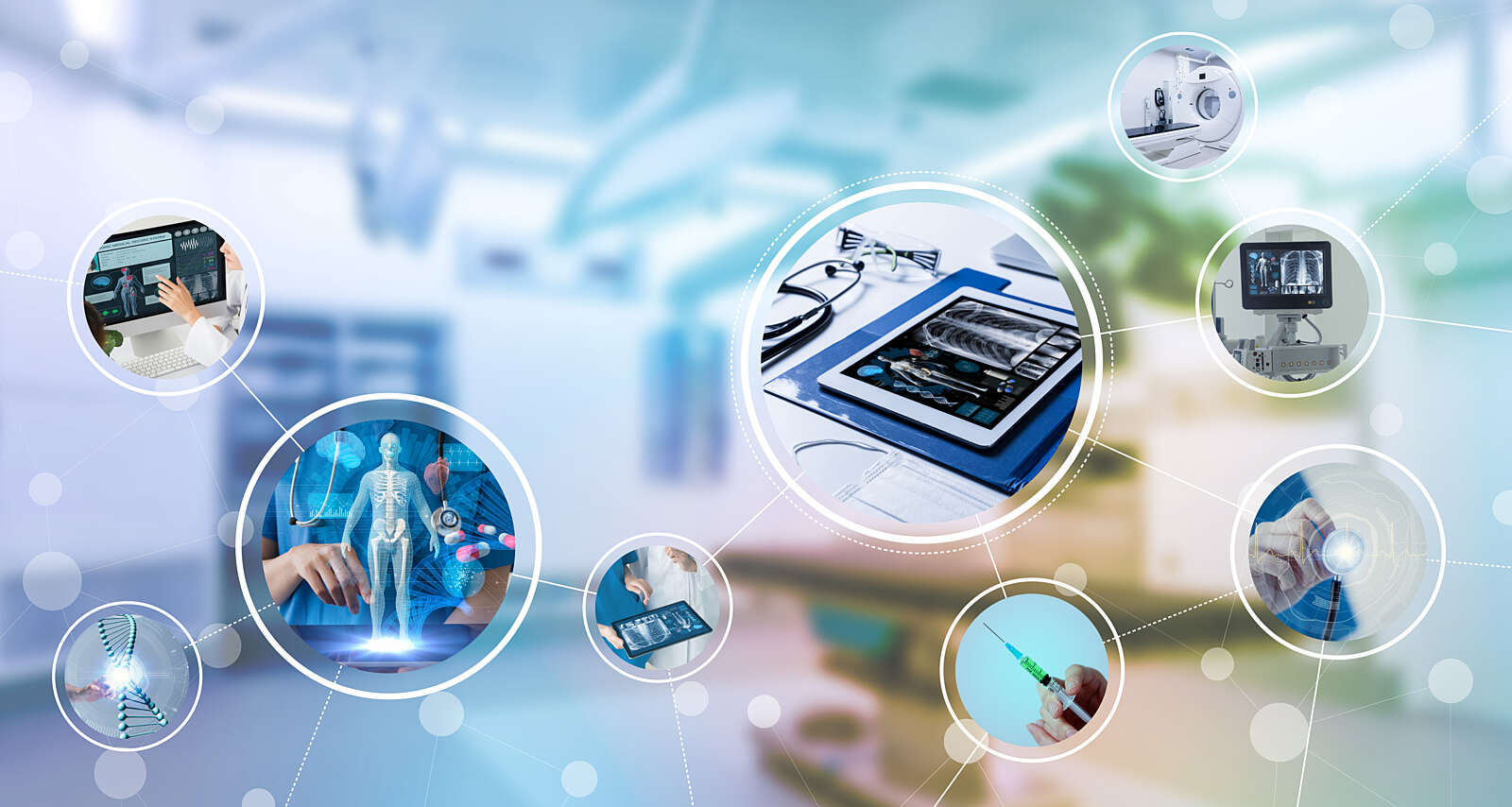IoMT in Healthcare
Q&A with Rodney Holmes, Senior Manager and IoMT Lead for Life Sciences
We spoke with Rodney Holmes, senior manager and Internet of Medical Things (IoMT) lead for the life sciences industry about the benefits and challenges of the IoMT in healthcare and where he sees it going in the future.
What is the potential for IoMT in healthcare?
There is significant potential for IoT in healthcare, both for providers and patient outcomes. COVID forced the healthcare industry to accelerate the use of telemedicine and other remote solutions to ensure patient safety and reduce the risk of infections. This pivot has brought more awareness and acceptance of digital tools to end users in medicine. This has led to manufacturers fast-tracking the development of new applications and processes, which will inevitably lead to better consumer and provider adoption of IoMT solutions.
Once providers have adopted IoMT solutions, the real value is driven from both faster and more informed, data-driven decisions. They have massive amounts of data at the device level and can leverage that for more informed macro level insights, as well as more tailored and personalized care. Manufacturers, providers, and patients alike benefit from connected devices.
As an example, we recently helped a leading medical device company achieve a 50% reduction in mean time to repair (MTTR) by enabling remote access to a vital cancer-fighting tool. Unscheduled downtime was more than an inconvenience to patients; it delayed critical treatment. By enabling remote access, 700+ support calls per month were resolved remotely, saving 4 hours of technician travel time per call and reduced service costs by up to $2,000 per issue.
That’s a great example, what are some other IoMT applications.
There is a full ecosystem of ways IoT is being applied in healthcare today, but most notably to me as a professional and patient are:
- Personal health wearables that can provide historical health data directly to doctors;
- Equipment condition and performance monitoring so that practitioners and patients both know the medical device they are working with (or attached to) is working properly and up to date;
- Track and trace devices, equipment, and staff so that administrators can see the full view of their organizations in near real-time and derive process and cost improvements.
- Robotic surgery using small internet-connected robots, surgeons can now perform complex procedures that would be difficult to manage using human hands.
- At the same time, robotic surgeries performed by small IoT-enabled devices can reduce the size of incisions required to perform surgery, leading to a less invasive process, and faster healing for patients.
It's interesting to think about IoMT as an ecosystem. Can you explain some of the benefits across the ecosystem?
For healthcare providers, IoMT creates a shift to a value-based model by gathering data and using advanced analytics to improve patient outcomes. IoMT delivers cost-savings to both patients and providers by reducing in-person visits to the doctor’s office, improving infection and chronic disease monitoring, predicting, and preventing equipment failures (which enables faster and less frequent repairs).
For medical device manufacturers the benefits of connected products are endless. From predictive maintenance to remotely delivering software updates and security patches, manufactures can see new streams of revenue via cloud-based capabilities and increased customer satisfaction from devices that are always online and functioning properly.
By connecting and automating healthcare systems, healthcare admins and insurance companies can receive payment quicker from better, and more accurate data, from a patient’s visit.
With so many benefits of IoMT, why is not everyone already connected? What are some of the challenges?
There are numerous challenges of implementing IoMT, and for every potential application there is also a potential for high-stakes challenges.
Data Security: Personal and sensitive information is valuable to hackers and protecting that information is a top priority. Systems need to be robust, and pressure tested to ensure the safety of data in transit.
Privacy and ownership: Does the patient, the provider or the manufacturer own the data that comes from a connected medical device? That question will be answered by HIPAA or GDPR-like regulations, but until then there is an on-going debate between patient privacy, and the providers and manufacturers giving up data that could be beneficial or helpful in research.
Interoperability: There is no adoption or conformity to medical device interoperability standards. These standards are important to the development of reliable interoperable devices from different manufacturers which could lead to new models of healthcare. We are limiting patient outcomes by not developing all devices to the same standards.
Given these very challenges, are you seeing growth in IoMT adoption?
Yes. Patient care is beginning to move away from the end of the healthcare value chain (treatment and aftercare) and towards total well-being which focuses on promoting healthy lifestyles. With this shift, we will continue to see a greater focus on early detection and prevention of diseases by continuously monitoring healthy bodies rather than waiting until symptoms arise.
What is the future for IoMT in healthcare?
The digital transformation of the healthcare industry is an inevitable trend that will impact medical institutions around the world. Healthcare organizations will increasingly continue to transform into service companies, offering value-added services beyond the traditional medical portfolio.
I see a greater convergence of IoMT solutions with advanced analytics and extended reality (XR) technologies as medical device manufacturers try to advance their ability to generate prescriptive insights for service and maintenance, remote training, support and service, and intelligent insights for product innovation.
Continuous remote patient monitoring and support will become their key service offerings and will allow for accessible, timely, and personalized care grounded in the health characteristics of each individual patient.
XR will also begin to play a bigger role by empowering end users to troubleshoot minor issues with devices, reducing the overhead costs associated with technician service. Training will become a differentiator in device sales, and one day in the future AR will connect EMT personnel in real-time with doctors in the emergency room.
A trend since the pandemic has been the willingness of medical device customers (both healthcare providers and consumers) to adopt digital tools for service and maintenance. Customer interest in self-service options has increased. Many are open to acquiring knowledge and independently attempting to troubleshoot and service. A leading laboratory instrument manufacturing company minimized transmission risks to field service technicians by extensively adopting virtual tools for delivering support. Augmented reality (AR) driven customer support and proactive asset monitoring increase visibility and control of instruments, while eliminating the need for on-site visits. XR and remote assistance have also enabled field technicians to accurately guide customers in self-troubleshooting situations.
The accelerating adoption of these and other technologies--by manufacturers, providers, and patients alike--is an exciting and positive development. IoMT has the potential to deliver new insights from patient data, increase device reliability and lower service costs, and ultimately, better patient outcomes.
Kalypso can help along any step of your digital transformation journey. For additional information, feel free to reach out to Rodney, or visit https://kalypso.com/industries/medical-device


